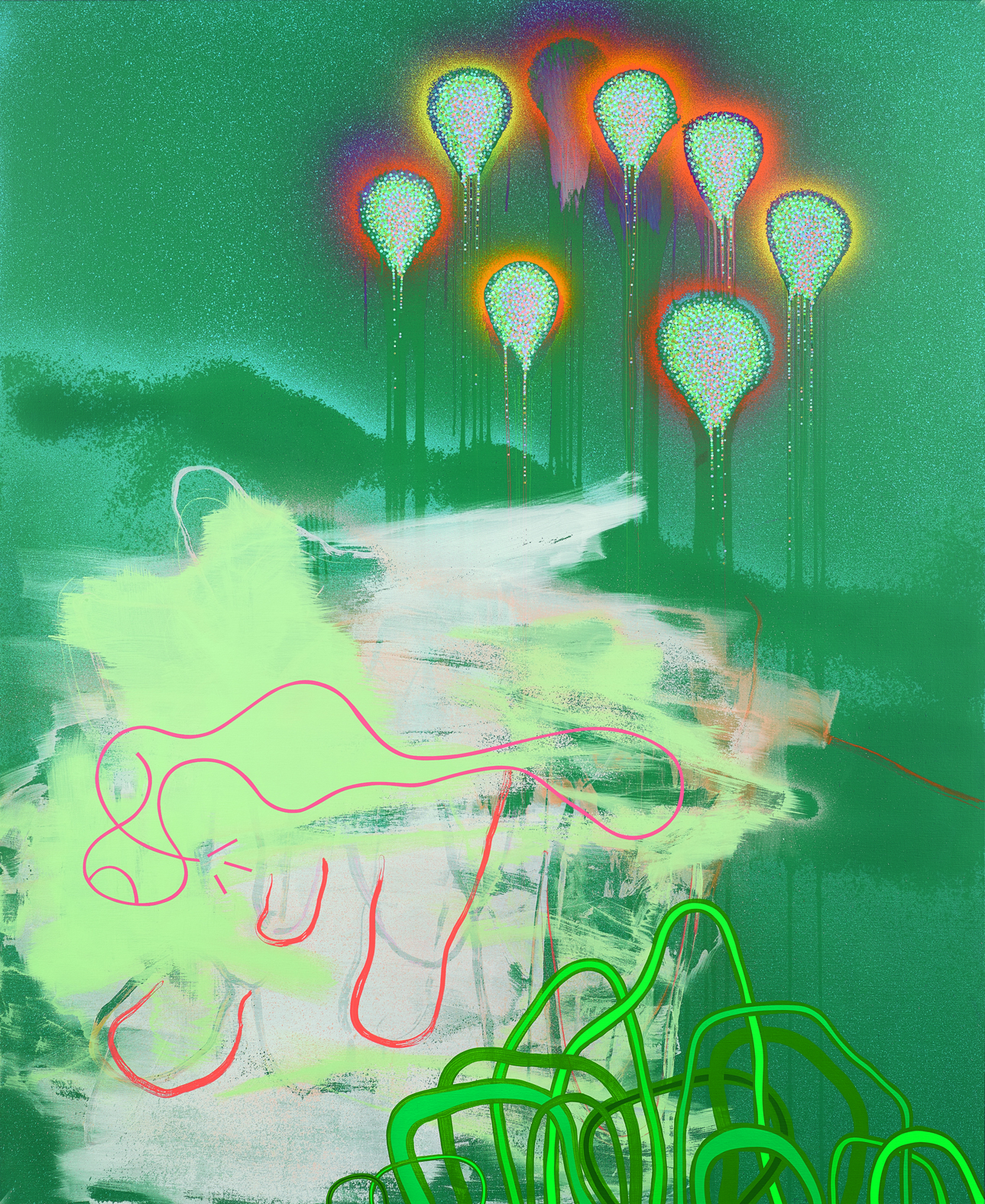ROBE – FOURNIER
For Christophe Robe’s second solo show at Galerie Jean Fournier we’re delighted to be presenting a group of recent works on canvas, wood and paper, and – for the first time – a series of three-dimensional pieces.
In recent years Robe’s focus has been largely on landscape and the vegetal world, notably in richly coloured but sometimes disconcertingly strange scenes. Gone are the renderings of interiors and domestic spaces, replaced by plant life and related elements: undergrowth, flowers, stems, leaves, water, tree trunks. Some we recognise at once, others are more elusive: Robe is out to portray landscape as such, but his real concern is his own mental and emotional topography.
The exhibition is orchestrated by pictures large and small, in a technical and gestural range that includes paint gun, airbrush, sanding, layering, scrubbing, overlapping planes, textural variation and runs. This painterly stratification dovetails with a resurgence of the artist’s perceptual memory and intensifies a dialectic between surface and depth.
We also see Robe moving onto fresh ground, with small sculptures made from paint leftovers salvaged from his studio. Shown at head-height on stands the visitor can circle, these tiny landscape volumes suggest a world in its own right, a micro-territory seemingly observed from a long way off through a telescope. There is a reminder here of the artist’s keen interest in changes of scale and the coexistence of different viewpoints.
Christophe Robe paints his big pictures standing, facing the canvas, but for the works on paper and the sculptures the physical approach is different. Sitting at his table and bent over his materials, he deploys a different kind of energy – just as the spectator is physically addressed in a different way by the disparity of scale between the canvases (approx. 240 x 190 cm) and the sculptures (7–8 cm). The viewer becomes immersed in the paintings, caught up in images too large for his field of vision, while in the case of the sculptures he finds himself in the role of an observer overlooking the intervening space.
